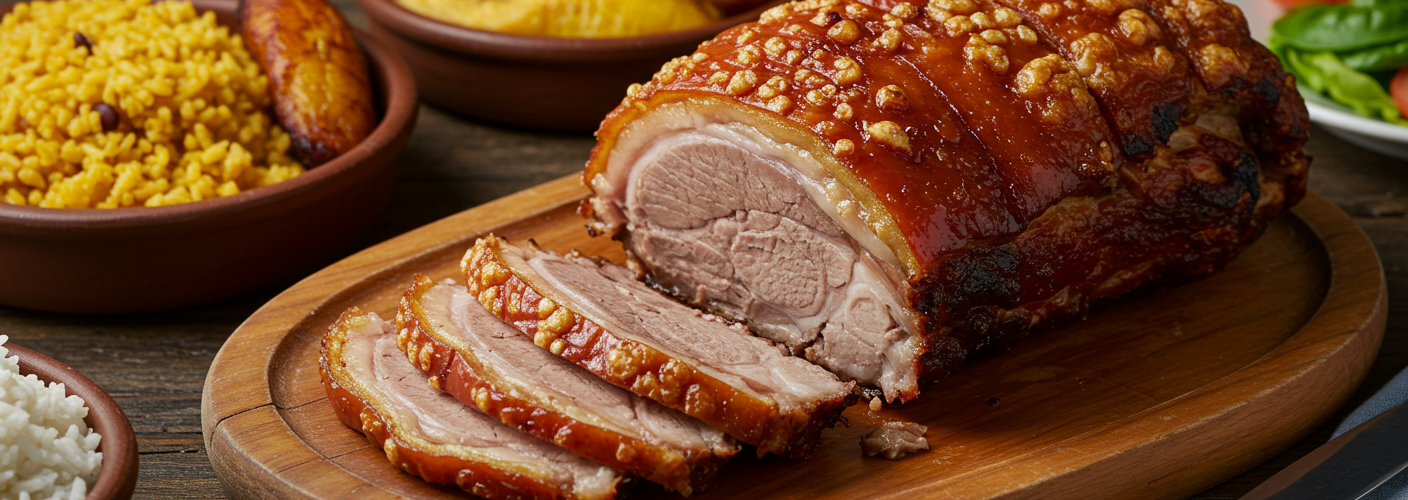When it comes to traditional Puerto Rican cuisine, one dish stands out not only for its flavor but also for the love and care that goes into preparing it: Pernil. This slow-cooked pork shoulder is more than just a meal; it’s a centerpiece of family gatherings, festive occasions, and a staple that brings people together around the table. Its deep, rich flavors and succulent texture make Pernil a dish worth mastering.
What is Pernil?
Pernil is essentially a whole pork shoulder, marinated and slow-cooked to perfection. Its origins can be traced back to Caribbean and Latin American kitchens, where the method of cooking meat low and slow is revered. The result is tender, juicy meat that can be shredded or sliced, usually served alongside rice, beans, and plantains.
The Key to a Great Pernil
The secret to achieving the perfect Pernil lies in the marination process. A well-crafted marinade, often known as adobo, infuses the pork with flavor and ensures it remains moist during cooking. Typical ingredients for this marinade include garlic, oregano, cumin, and vinegar, blended together to create an aromatic paste that brings the meat to life. Some recipes also include citrus juices, such as orange or lime, which add a zesty brightness that balances the richness of the pork.
Slow Cooking: The Science Behind the Flavor
Slow cooking allows the flavors to meld and penetrate the meat deeply. Cooking at a lower temperature for several hours breaks down the tough connective tissues in the pork shoulder, resulting in an incredibly tender bite. The recommended method is to start the cooking process at a higher temperature to achieve a golden-brown crust on the outside, then reduce the heat to allow the meat to slow-roast and become melt-in-your-mouth delicious.
Serving Suggestions
While Pernil is often the star of the show at family gatherings, it pairs beautifully with a wide variety of side dishes. Classic accompaniments include arroz con gandules (rice with pigeon peas), tostones (twice-fried green plantains), and a fresh salad to cut through the richness of the pork. Some enjoy it in sandwiches, layering slices of Pernil with cheese, avocado, and even a bit of pickled red onion for a vibrant twist.
Making Pernil Your Own
Though traditional recipes are deeply cherished, don’t shy away from adding your personal flair. Whether you prefer adding a hint of heat with some chili paste in the marinade or experimenting with different herbs, the beauty of Pernil lies in its versatility. Each family has its own beloved recipe, passed down through generations, making it a truly nostalgic dish.
A Culinary Experience
Cooking Pernil is not only about the end result but the experience of preparing it. The process encourages patience and love, as it necessitates time and attention to detail. Moreover, it’s an opportunity to gather family and friends, sharing stories and laughter while the aroma of slow-cooked pork fills the home.
In a world bustling with quick meals and convenience foods, taking the time to prepare Pernil can feel like a meditation. It’s a celebration of culture, tradition, and togetherness—reminding us that the best meals are often those crafted with thoughtfulness and care. So, roll up your sleeves, gather your ingredients, and transform your kitchen into a warm, inviting space filled with the enticing scents of Pernil. Your taste buds will thank you!




Add comment